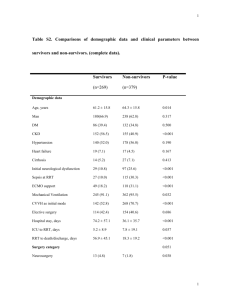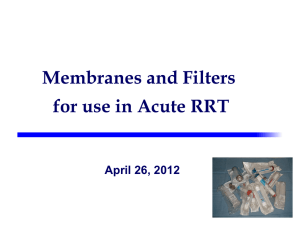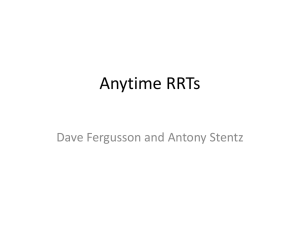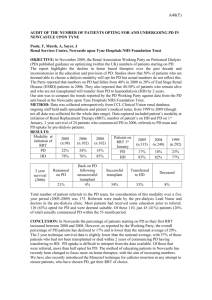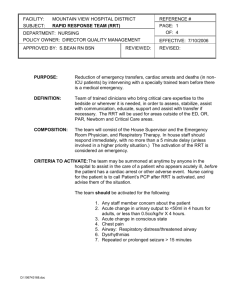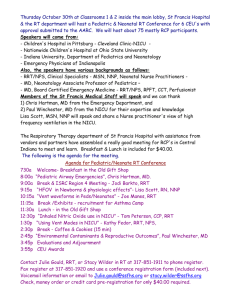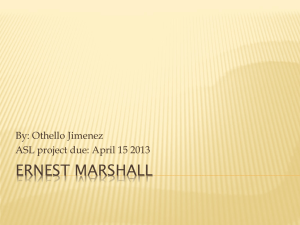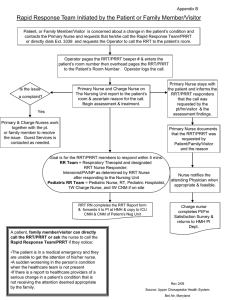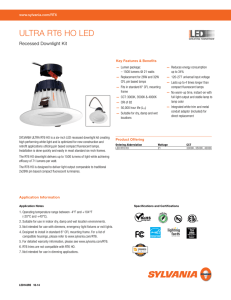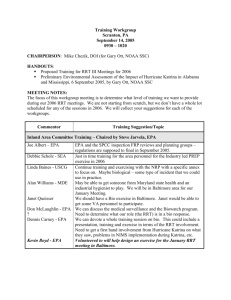Campus Conversation on Services Portfolio Review
advertisement
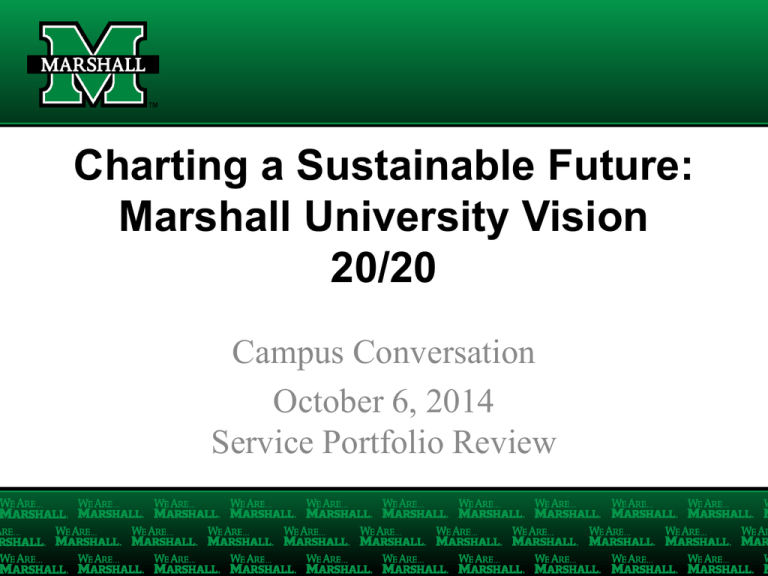
Charting a Sustainable Future: Marshall University Vision 20/20 Campus Conversation October 6, 2014 Service Portfolio Review Vision 20/20: Strategic Planning to Sustain Marshall’s Future • How will the University define and sustain its future? – State and Federal Funding challenges – Declining enrollment – Inability to compensate through tuition increases • Marshall’s strategic planning process will help us determine how we can thrive in a dramatically changing public funding environment. • Challenge: Improve Net Revenue (Revenue-Cost) so we can invest in people, programs and facilities. • Retreat #1 October 11, 2013 • Retreat #2 March 25, 2014 October 2013 Retreat • • • • • • Understand the current external environment for higher education nationally and in West Virginia; Achieve greater clarity for the stakeholder groups regarding the current and future sustainability of the institution’s business model; Consider appropriate changes to be explored in the institutional business model to allow for: – Affordable tuition without sacrificing educational quality or the financial health of the University; – Management of financial risk; and – Strategic realignment of the institution’s mission/vision within a more variable resource environment; Assess resource allocation decision-making at the institution in terms of its transparency and effectiveness in supporting strategic programs and services that provide a mission/market/margin framework; Create an action plan; and Identify appropriate information and a communication strategy to support the proposed November Board of Governors’ Budget/Finance Planning Summit. In addition to these six goals, University leadership created a long term goal for the retreat participants to consider, specifically how the University might engage in financial re-engineering and sustainability planning in anticipation of a markedly lower public funding environment, potentially approaching 90% less state funding ($50 million reduction in State Support) by Fiscal Year 2024. Action Plans to Achieve Goal • Communication Plan • Shared Future Vision/Roles and Responsibilities • Academic Portfolio Review • Services Portfolio Review • Budget Process • Pro Forma Model • Key Performance Indicators Service Portfolio Review Project • Provide a broad and balanced review of services, reflecting a university wide approach. • Configure Rapid Response Teams chosen from a broad crosssection of University stakeholders: – – – – Faculty Classified staff Non-classified staff Administration • Project Target – Identify $7-10 million in net revenue enhancement for FY 2016 – Justification: 5.8 million of “one-time” items used to balance 2015 budget and one year of faculty and staff raises • Capture cost savings for the university. • Focus on services that will support increased net revenue. • Enhance the level of services at the university/address “pain points”. Rapid Response Teams • Assisted by the rpkGroup • Based on their input, configure teams around “opportunity themes” • For the first phase of this effort: – Six themes, teams – 5/16/14 kick-off, 9/1 draft report date – July 24 mid-point Rapid Response Teams • • • • • • Duplication of Effort Leveraging Technology Facilities Auxiliaries Vendors and Contracts P-Card and Travel Team Targets Team Facilities Vendors/Contracts Auxiliaries Leveraging Technology Duplication of Effort P-Card Total Target ($MM) 1.36 2.27 1.82 1.36 2.73 0.45 10.00 Results Classification of Recommendations New Pcard reconciliation process Sell University Heights property Training requirements/efficiency Eliminate shadow systems/ licenses Rebid suppliers of cable services Net Impact (Low to High) High Impact/Difficult = $6,458,809 High Impact/Easier = $2,223,334 Reduce memberships Restart continuing education Create central fax server Licensing affiliate- increase revenue from trademarks Enhance grant administration processes Low Impact/Difficult = $617,819 Low Impact/Easier = $532,896 Ease of Implementation (Difficult to Easier) Next Steps • Working with the recommendations to develop a holistic plan for implementation, beginning with items that can be implemented in the shortterm • October 17 Retreat will convene a broad cross-section of the University to kickoff that phase • Questions? RRT Team Goals Success Statement From RRT Kick-Off 5/16/14 Marshall University is being challenged by multiple changes in the external environment. These changes include the mix of resources that support the University, which are increasingly shifting from state support to tuition and fees and other revenues generated directly by Marshall. In order to control its financial destiny, and allow for necessary reinvestment in its mission, the University must now consider the return on investment from all current and future resources. This “return on investment” is not only financial, but a primary consideration of the contribution made to student success. This focus on return on investment is being lead, in part, by a Rapid Response Team (RRT) appointed by the University’s leadership and Board of Governors. As part of this process, the Team is targeting a goal of $7 -10 million in savings. Beyond the savings target, however, this RRT effort is the beginning of a continuous process of improvement to allow Marshall to deploy resources for growth, effective competition and successful investment in its future and that of its students. This successful future includes the ability to appropriately compensate the University’s faculty and staff. The RRT charge and goals are multi-faceted, yet closely linked. They include: o Improving the quality and efficiency of customer service – students, faculty and staff o Focusing on enhancing services which support student success o Educating the campus on service delivery, and increasing the level of accountability and transparency around service offerings o Contributing to a culture of innovation and flexibility o Serving as champions of the change process necessary to achieve these improvements in service quality and efficiency o Creating a lens through which services and return on investment can be understood, shared and discussed o Conducting a RRT process that is transparent, by means of open and frequent dialog and information sharing Ultimately, each member of the RRT process believes that they will contribute to a campus culture and level of service that “Makes us Marshall”.


